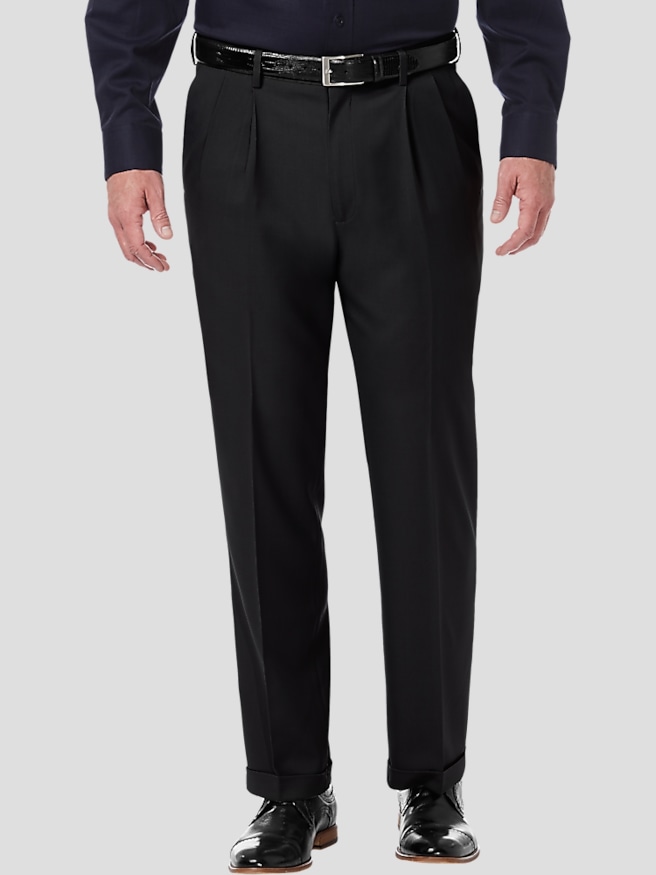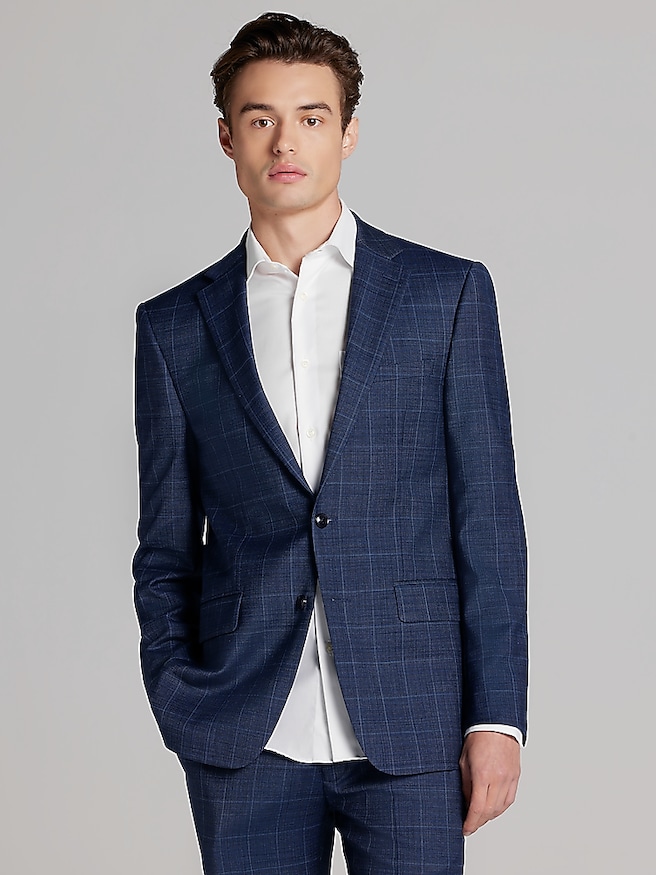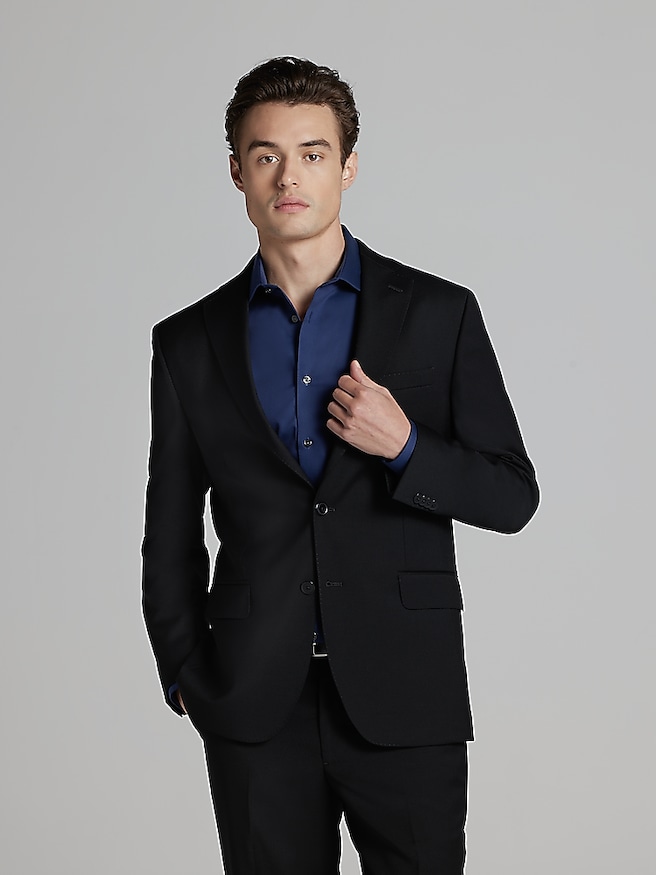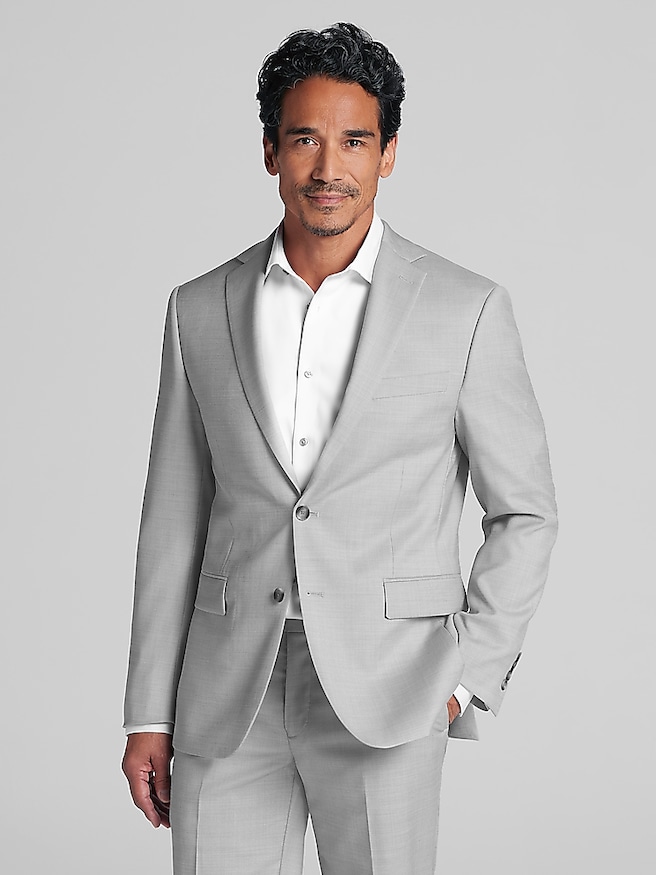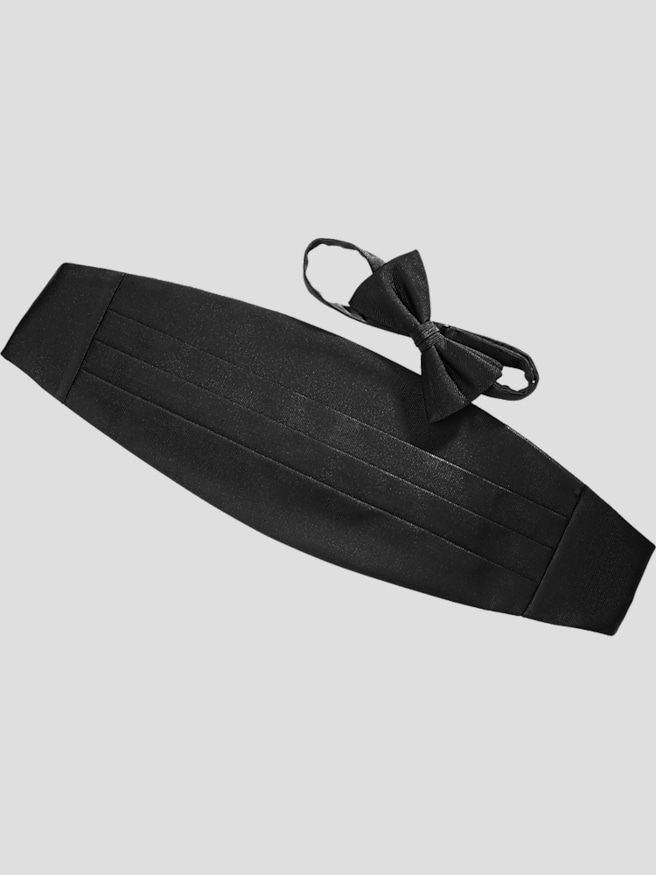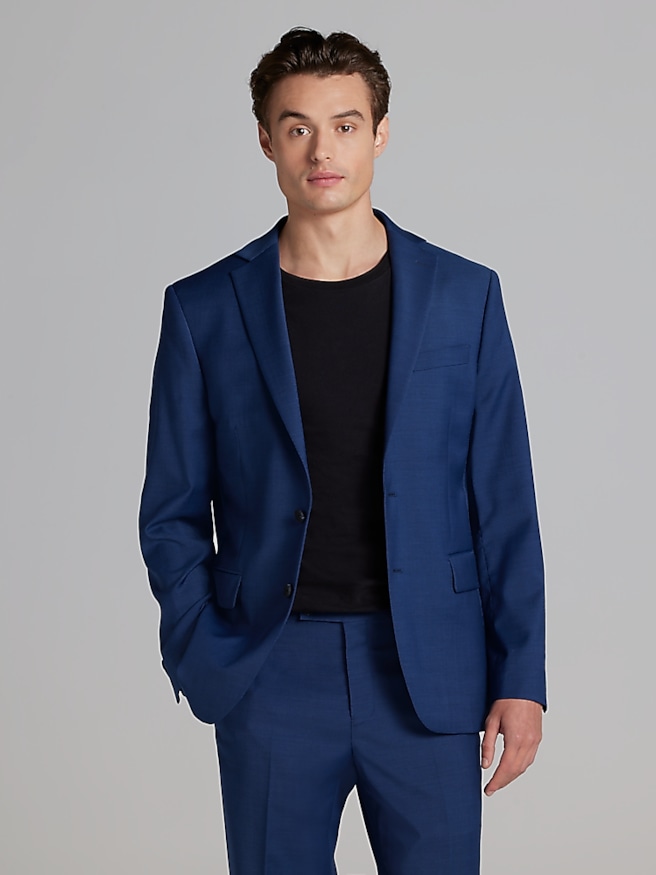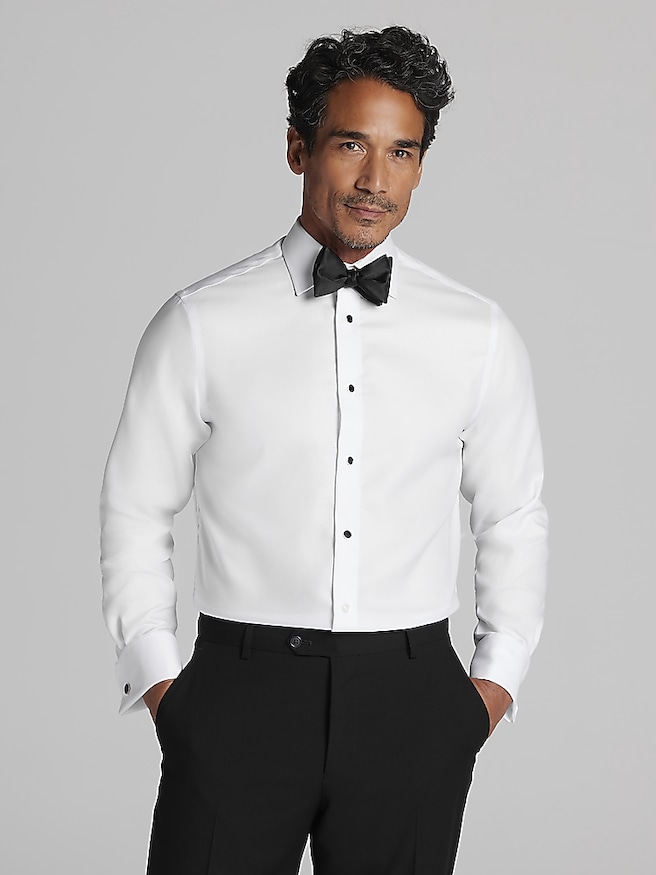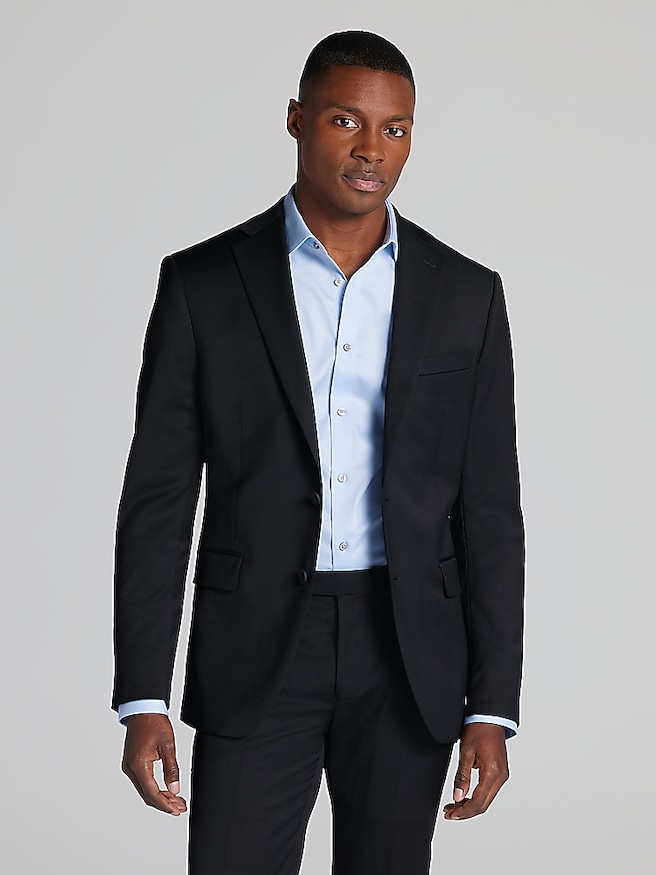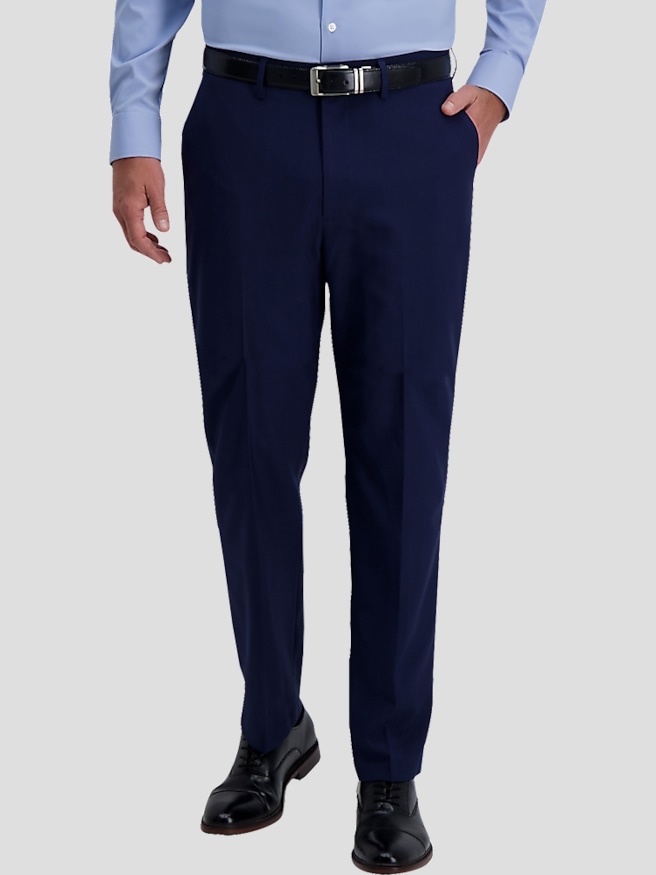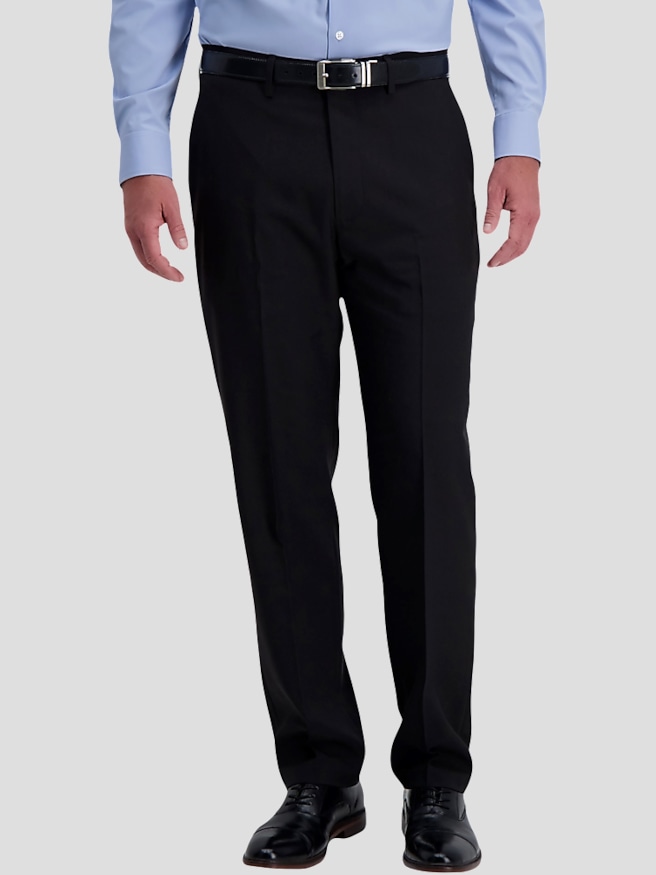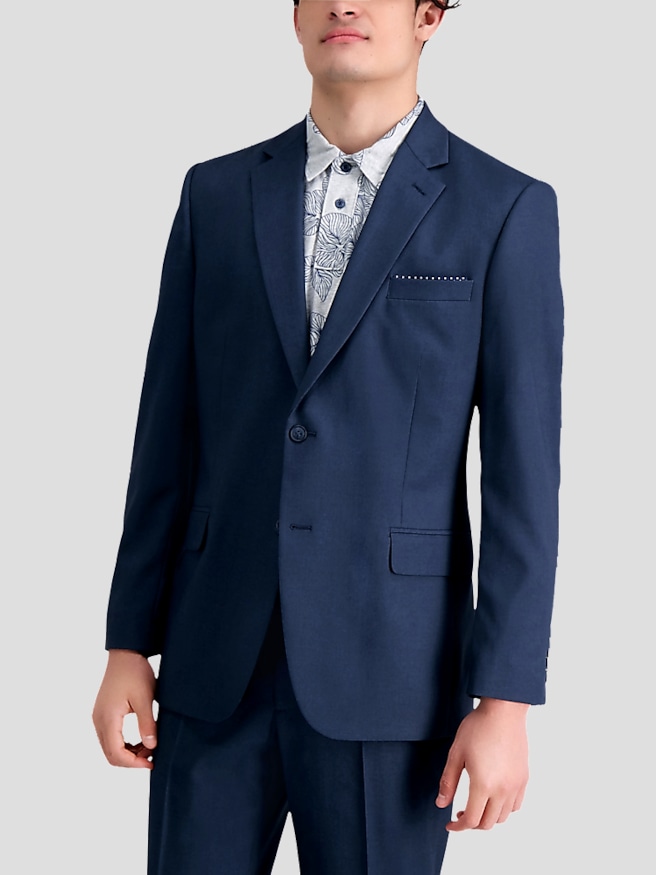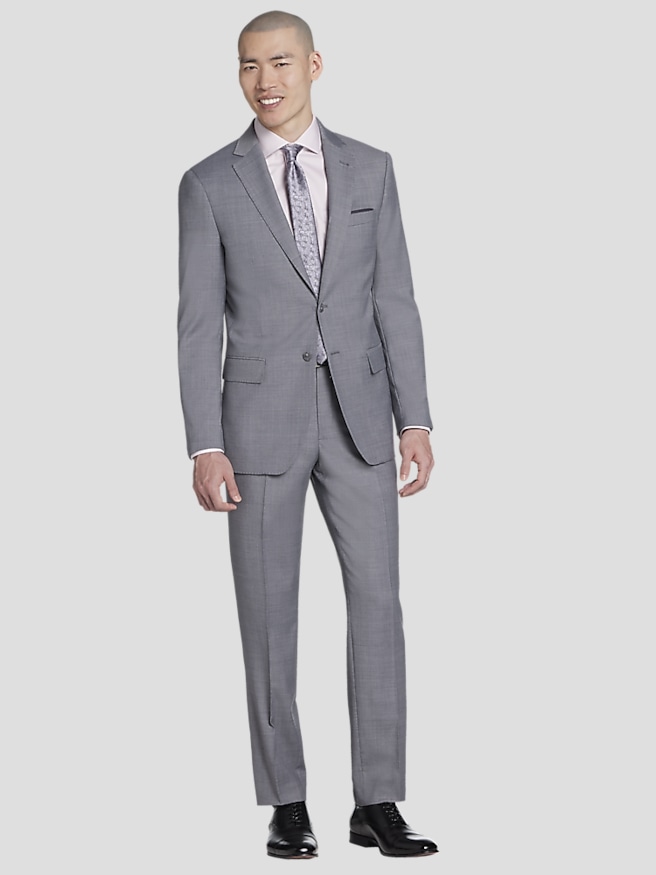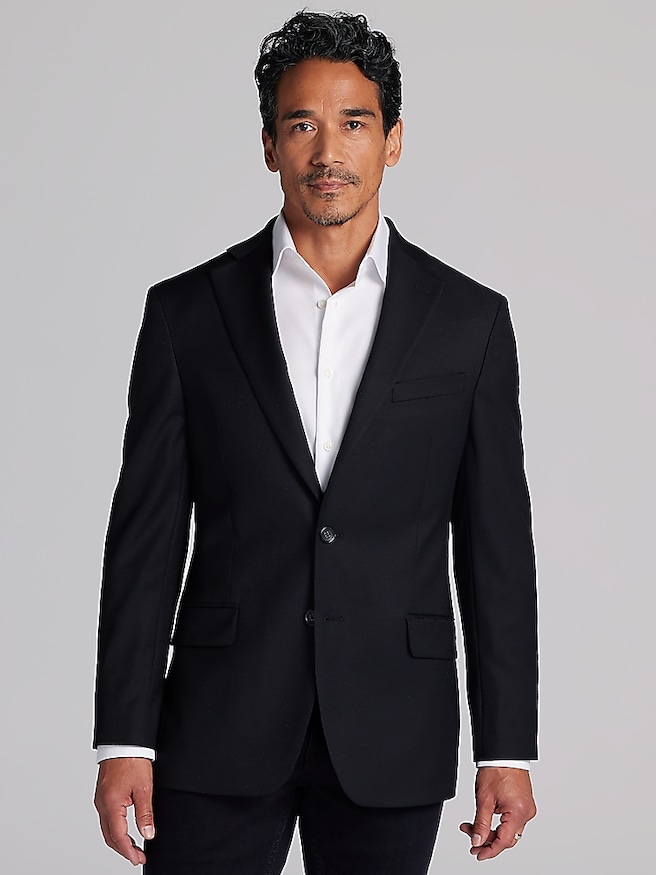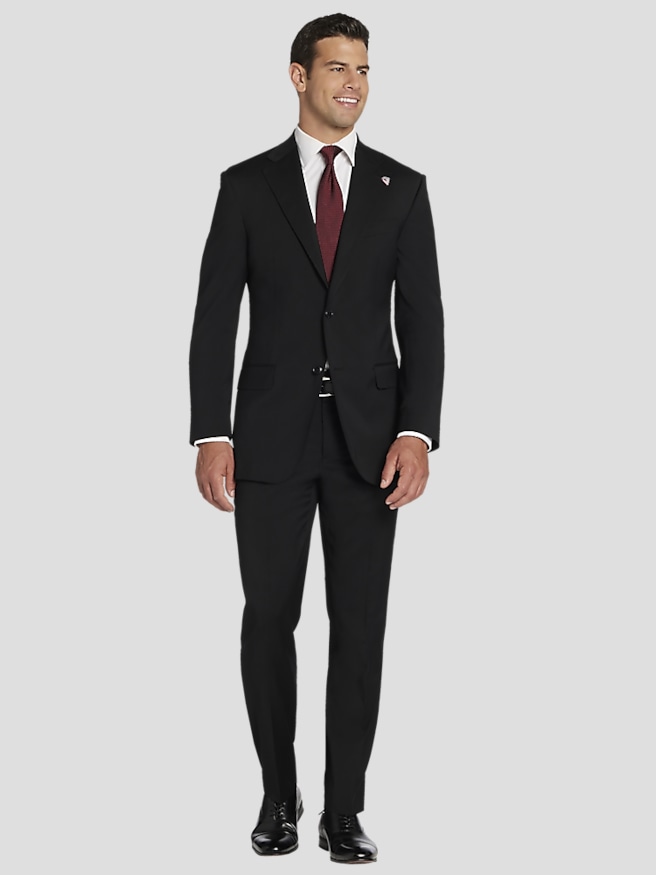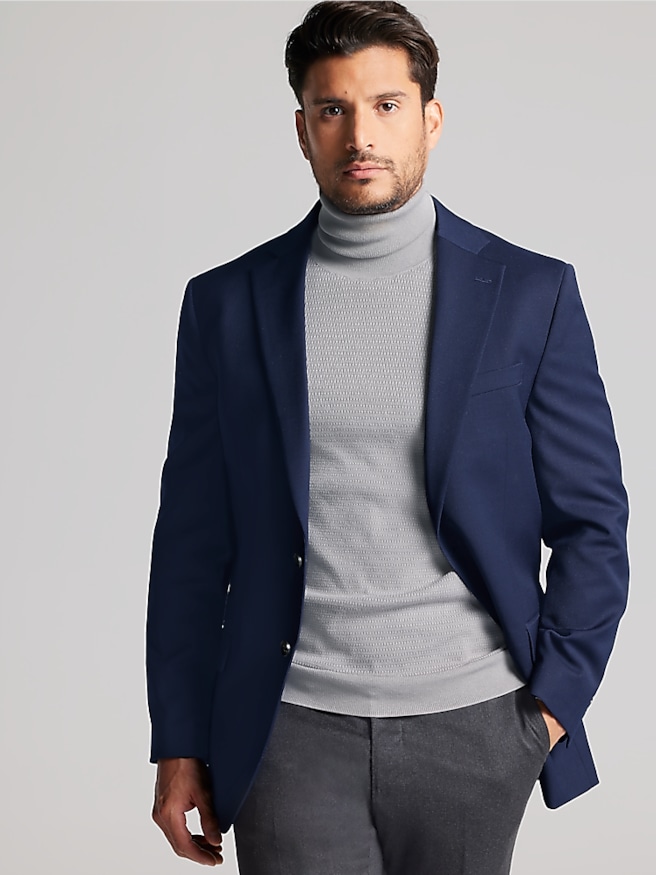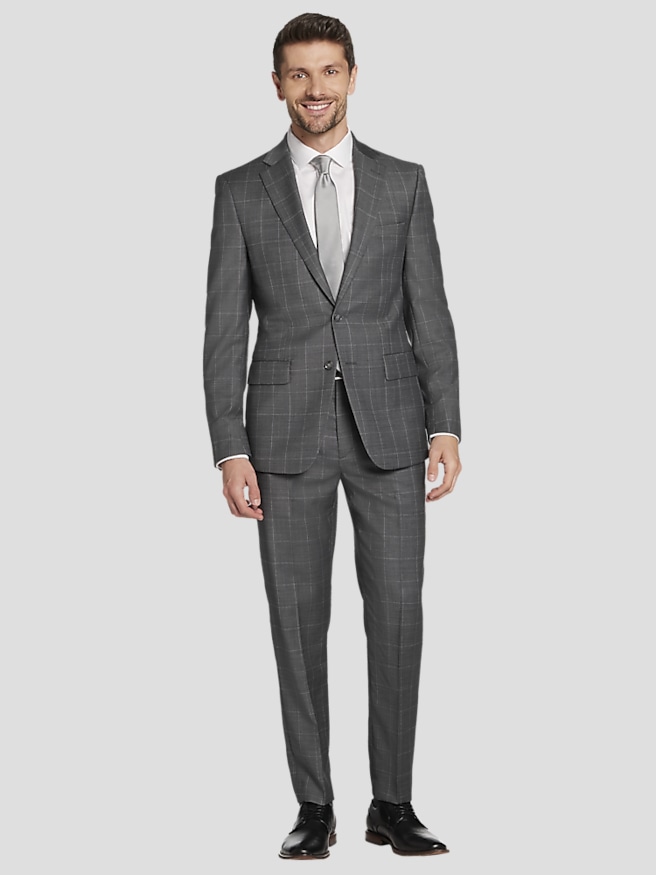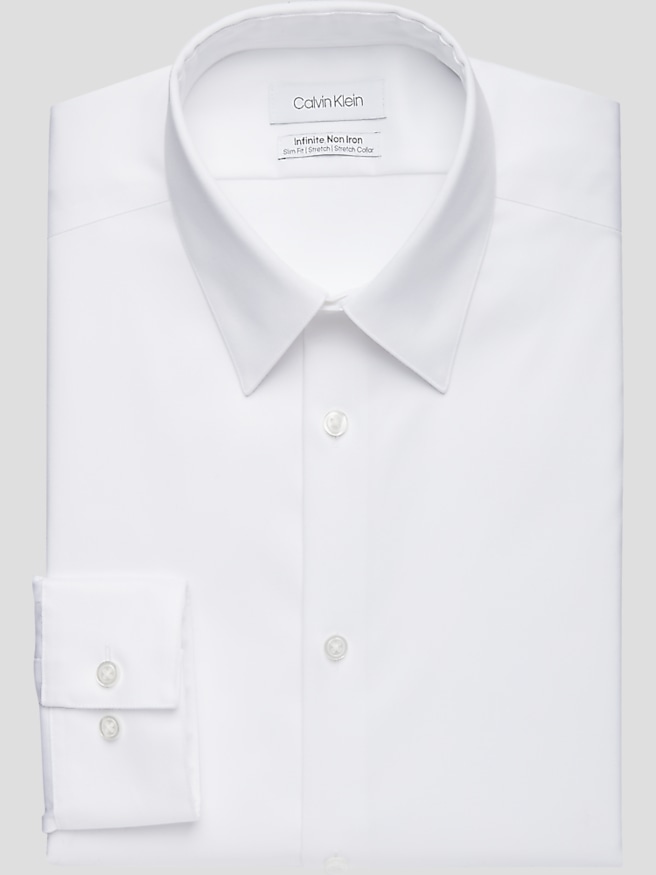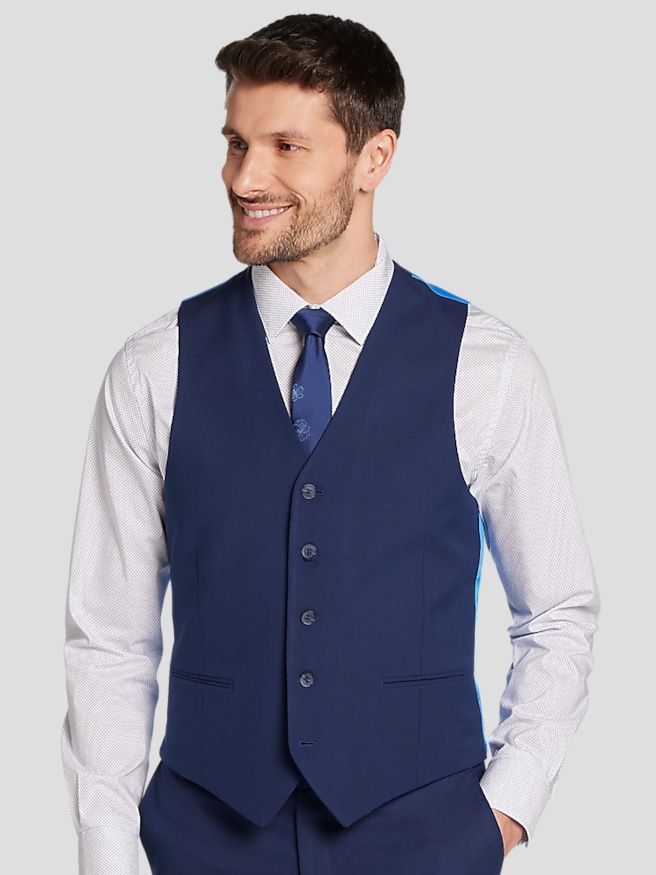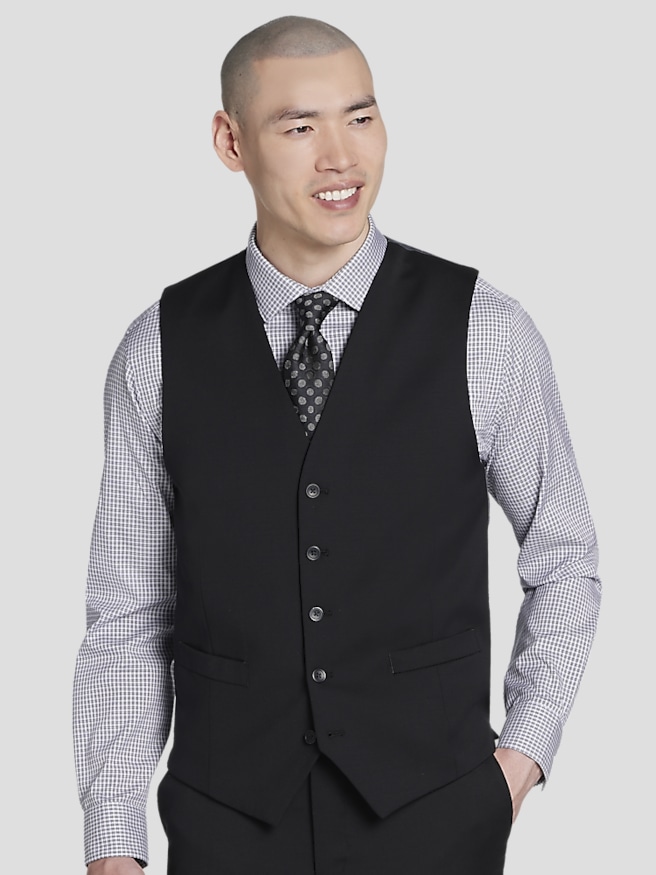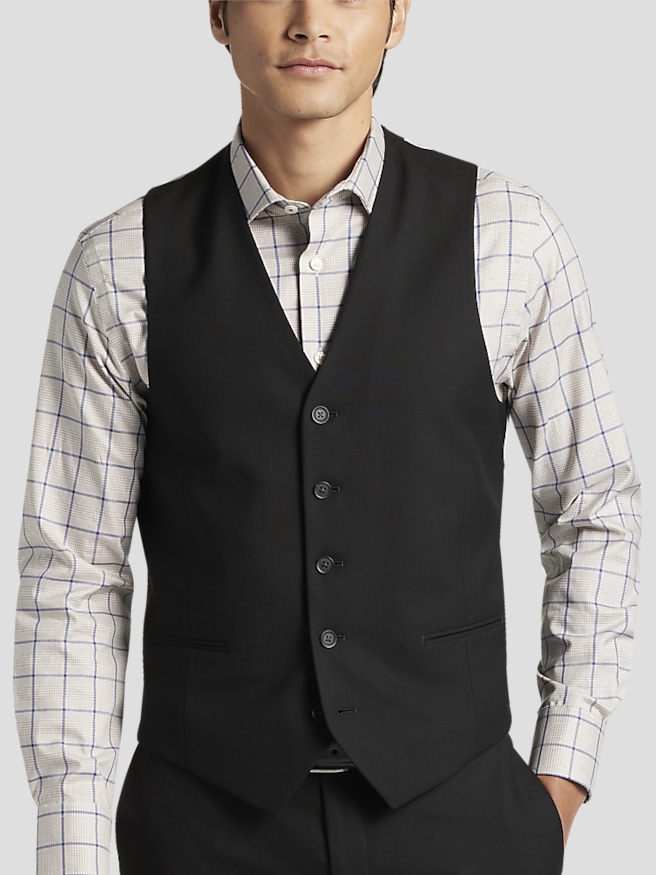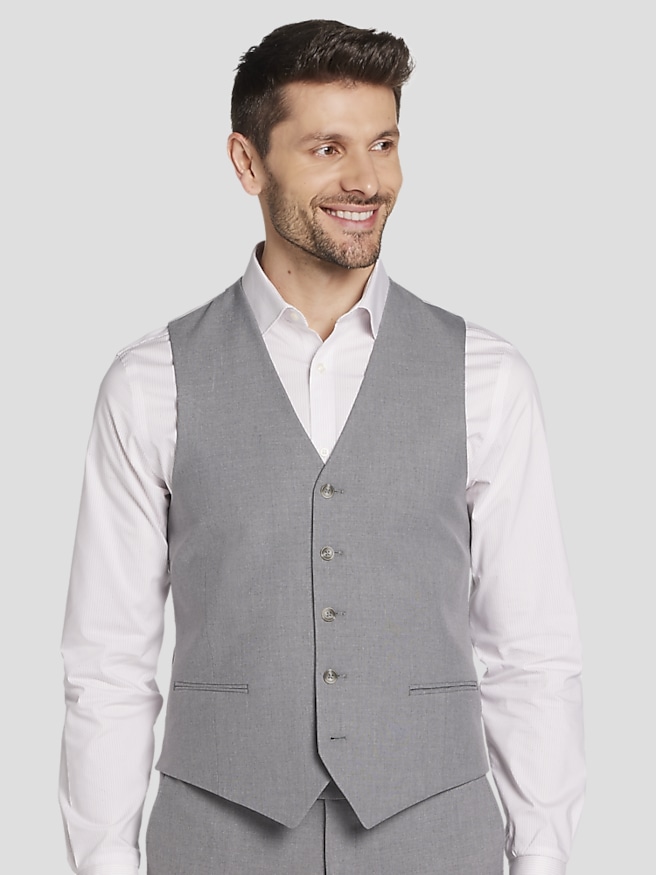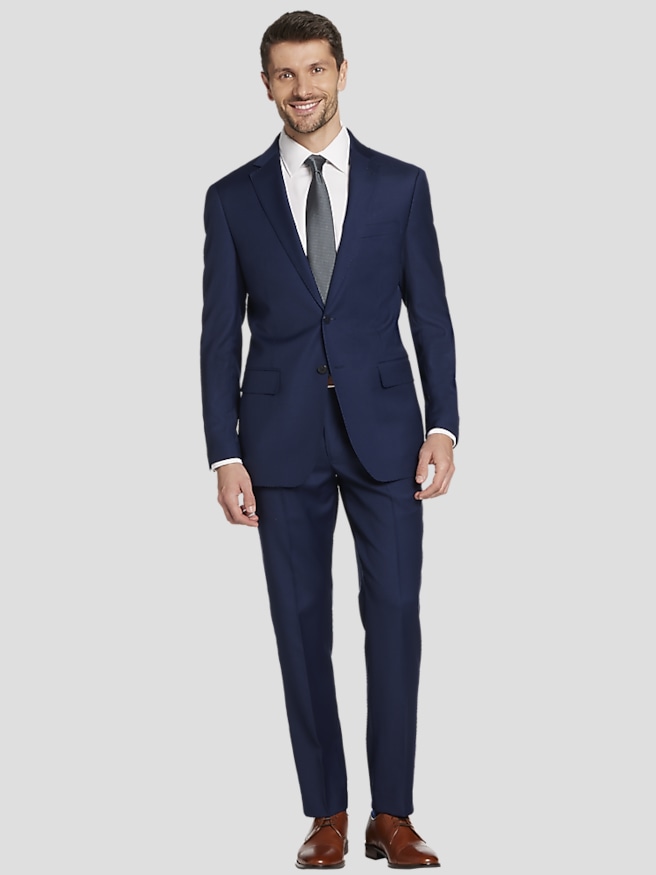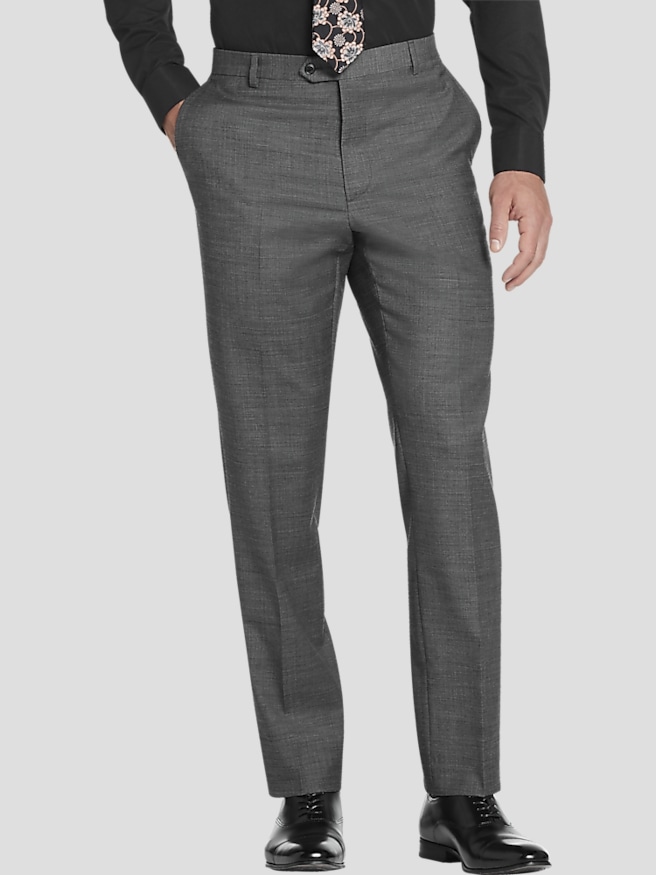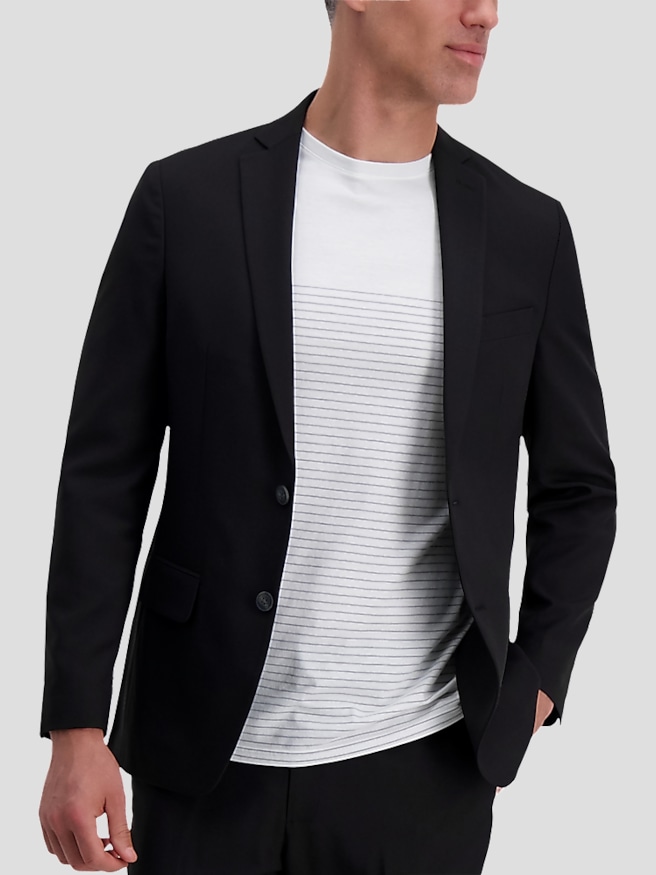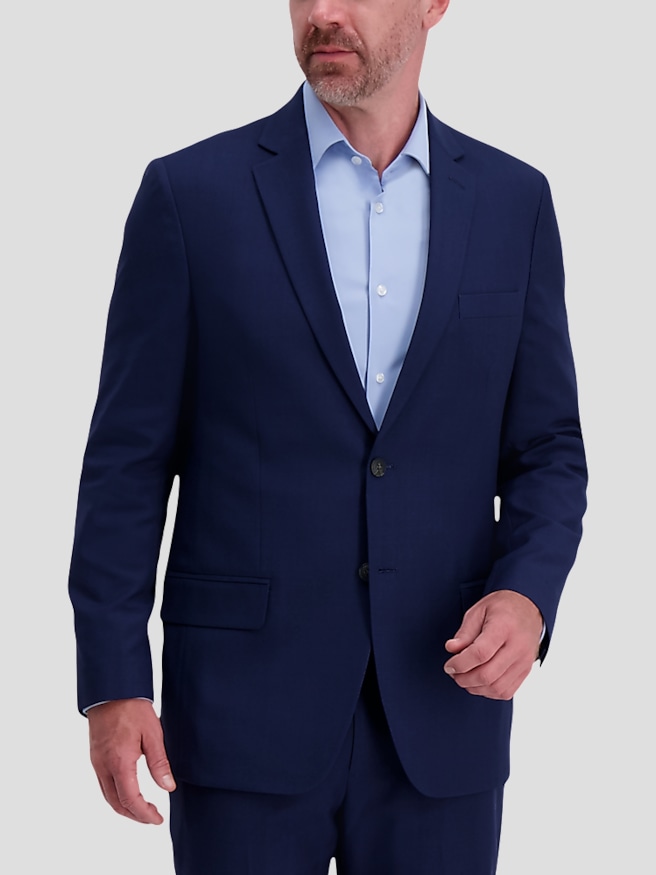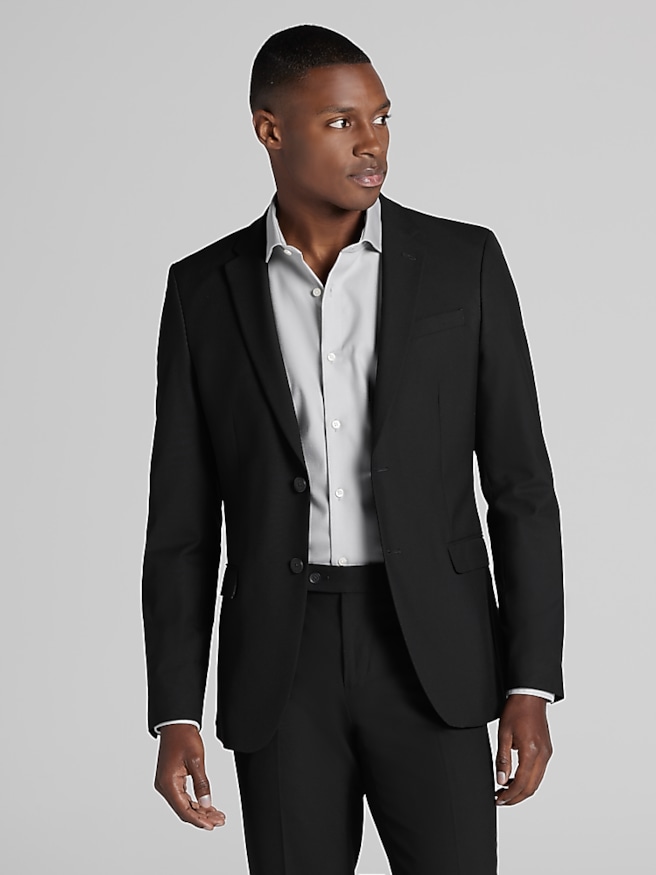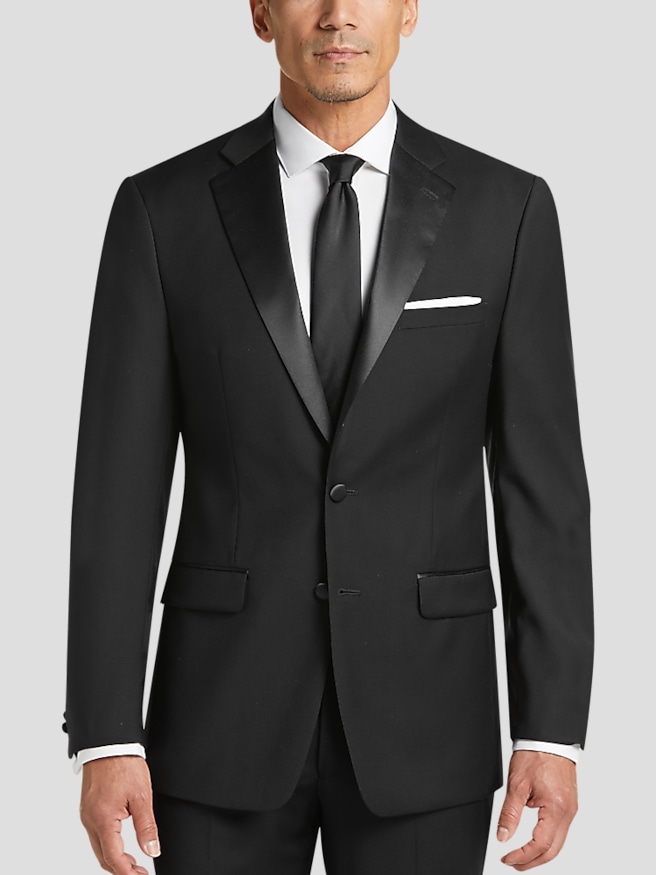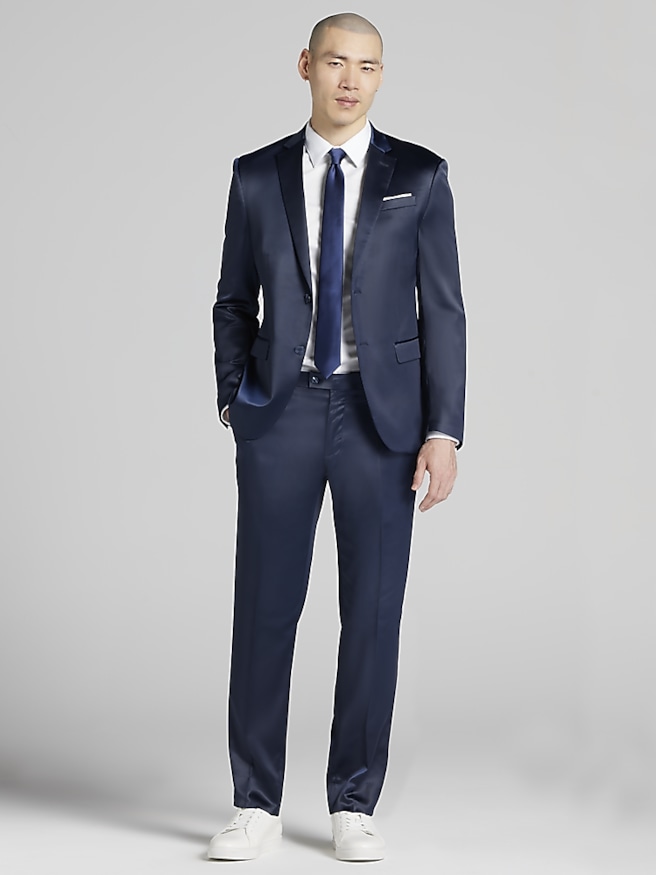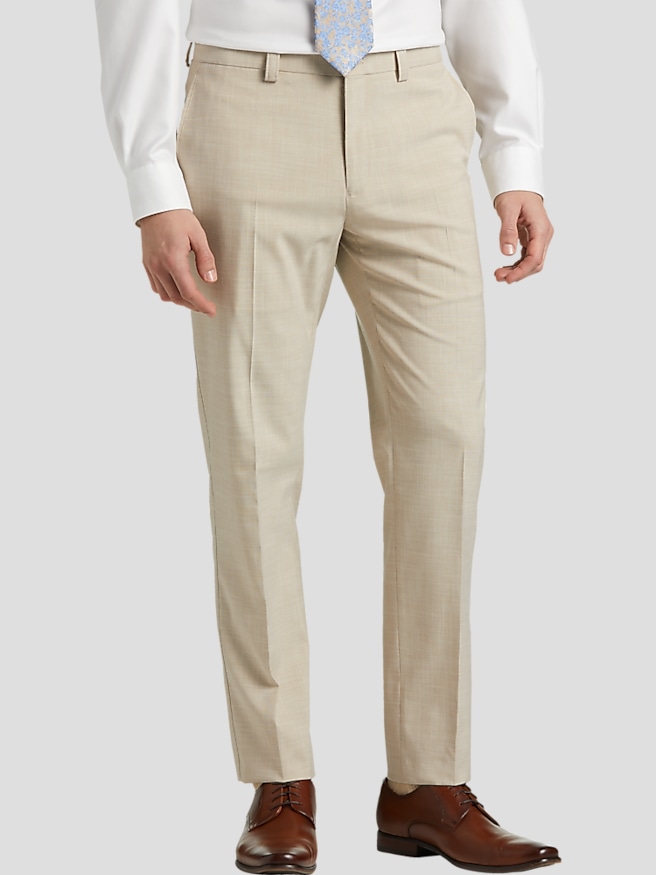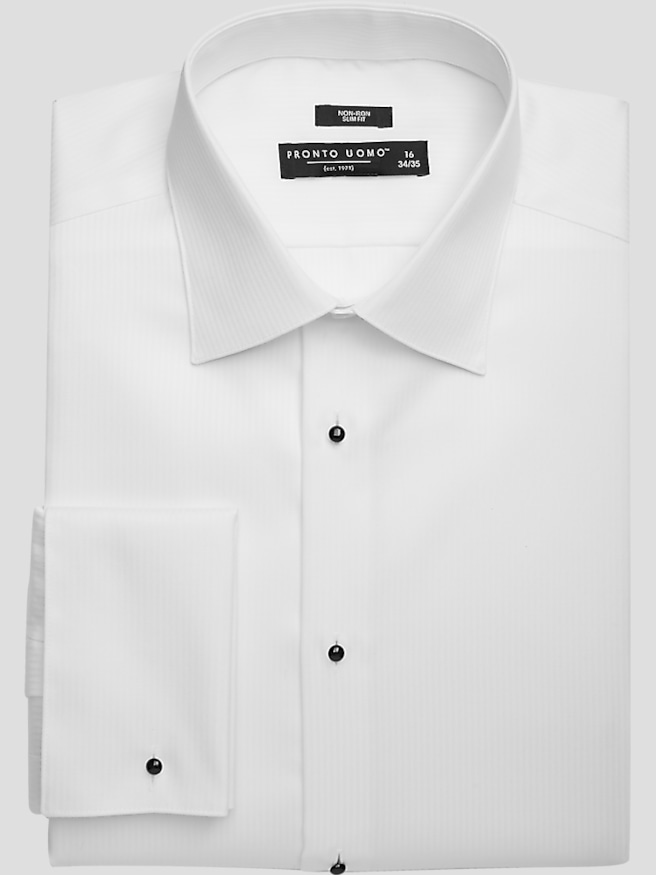Groom Attire For Weddings
Groom attire for weddings is all about making a statement while exuding elegance and sophistication on your special day. At Men's Wearhouse, we understand the importance of finding the perfect ensemble that complements your style and enhances the overall wedding theme. Whether you're envisioning a classic black-tie affair or a more relaxed outdoor celebration, our curated selection offers a variety of options to ensure that you look and feel your best as you walk down the aisle. Explore our collection to discover tailored suits, refined tuxedos, and timeless accessories designed to elevate your wedding day look with confidence and charm.
Groom Attire For Weddings
FAQs
What is the difference between a suit and a tuxedo for groom attire at weddings?
A suit and a tuxedo differ primarily in their level of formality and detailing. Tuxedos are typically reserved for formal or black-tie weddings and feature satin accents on the lapels, buttons, and often the stripe down the side of the trousers. Suits, on the other hand, are more versatile and suitable for a range of wedding styles, from semi-formal to casual, and do not have satin details. The choice between the two should be guided by the wedding’s dress code and overall theme.
How can a groom coordinate his attire with the bride and wedding party?
To achieve a cohesive look, the groom should consider the color palette, formality, and style of the bride’s dress and the wedding party’s outfits. This can be done through subtle matching or complementary colors in accessories such as ties, pocket squares, or boutonnieres. Coordinating fabrics and textures also help unify the group’s appearance, ensuring the groom’s attire harmonizes with the overall wedding aesthetic.
What accessories are commonly included with groom attire for weddings?
Common accessories for groom attire include ties or bow ties, pocket squares, cufflinks, dress shoes, and a boutonnière. For more formal looks, a waistcoat or cummerbund may be added. These details allow the groom to personalize his ensemble and can be chosen to reflect the wedding’s color scheme or theme.
Can groom attire be a good gift for someone in the wedding party?
Yes, items such as personalized cufflinks, luxury ties, or elegant pocket squares make thoughtful and practical gifts for the groom, groomsmen, or fathers of the couple. These accessories serve as lasting mementos of the special day and can be worn on future occasions.
How should a groom choose the color of his suit or tuxedo for a wedding?
The color of the groom’s suit or tuxedo should reflect the formality of the event, the season, and the overall wedding color scheme. Classic colors like black, navy, or charcoal gray are always appropriate, while lighter shades or unique hues can be considered for daytime or less formal weddings. It’s important for the groom’s attire to complement the bride’s gown and the overall aesthetic of the celebration.
